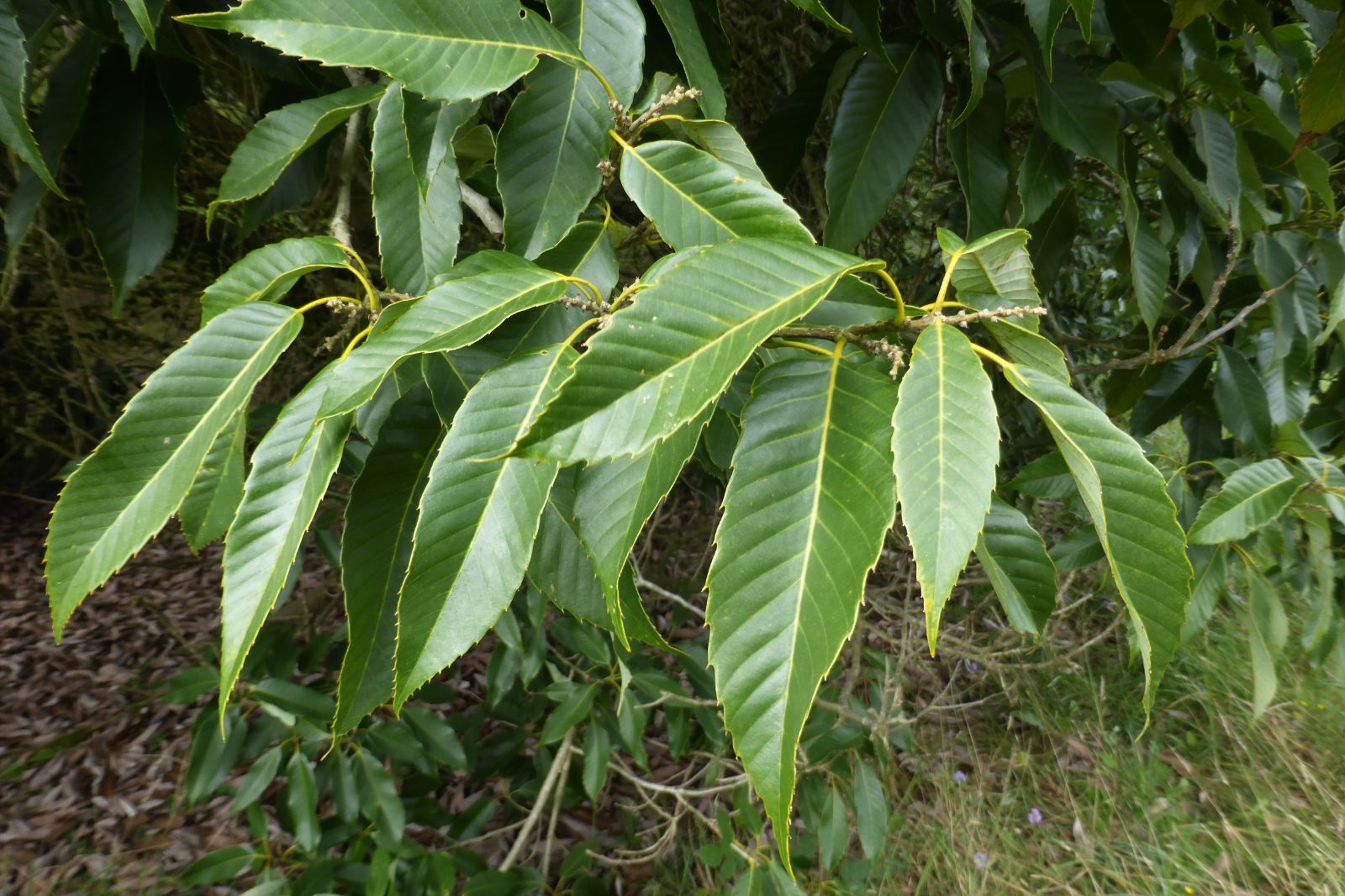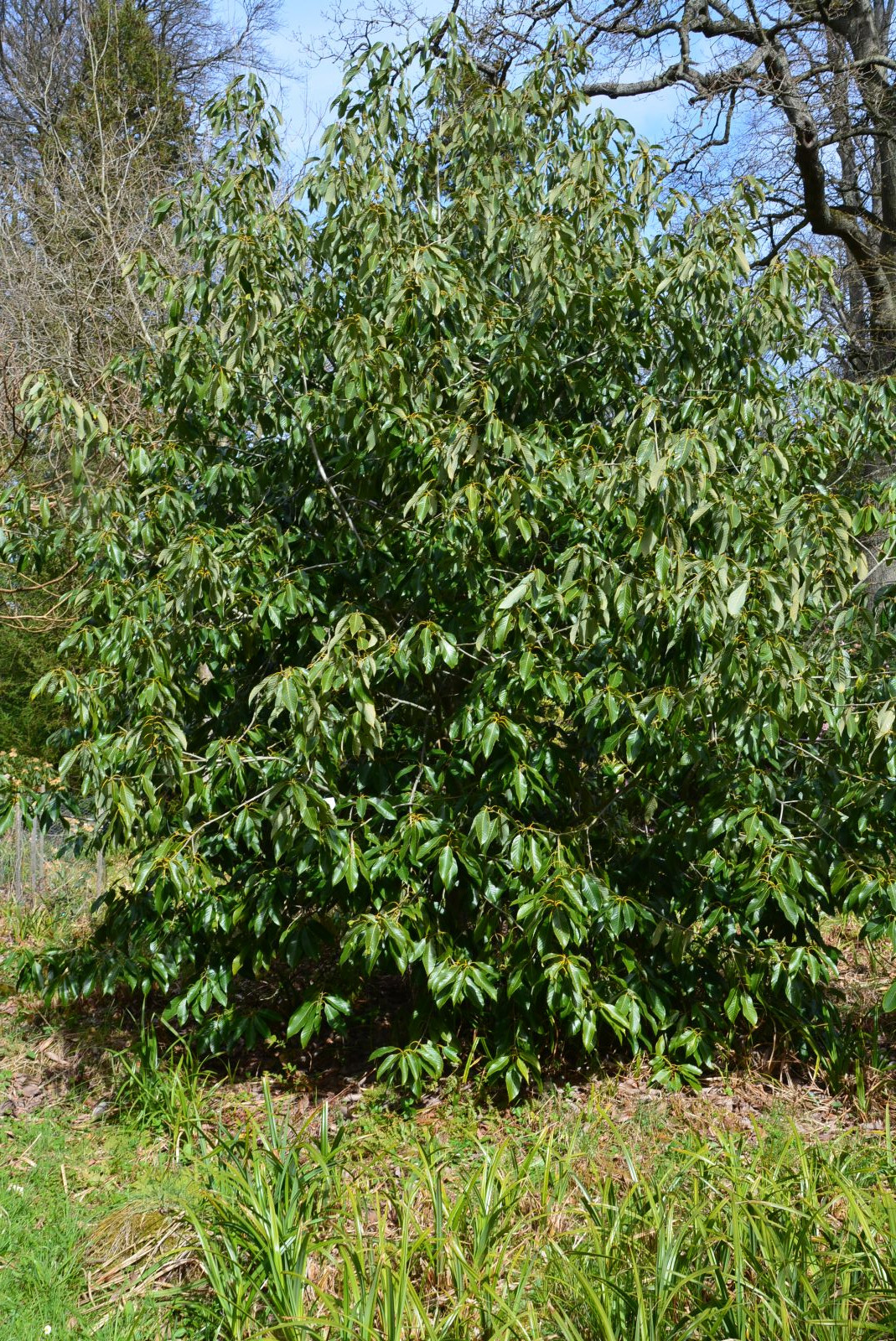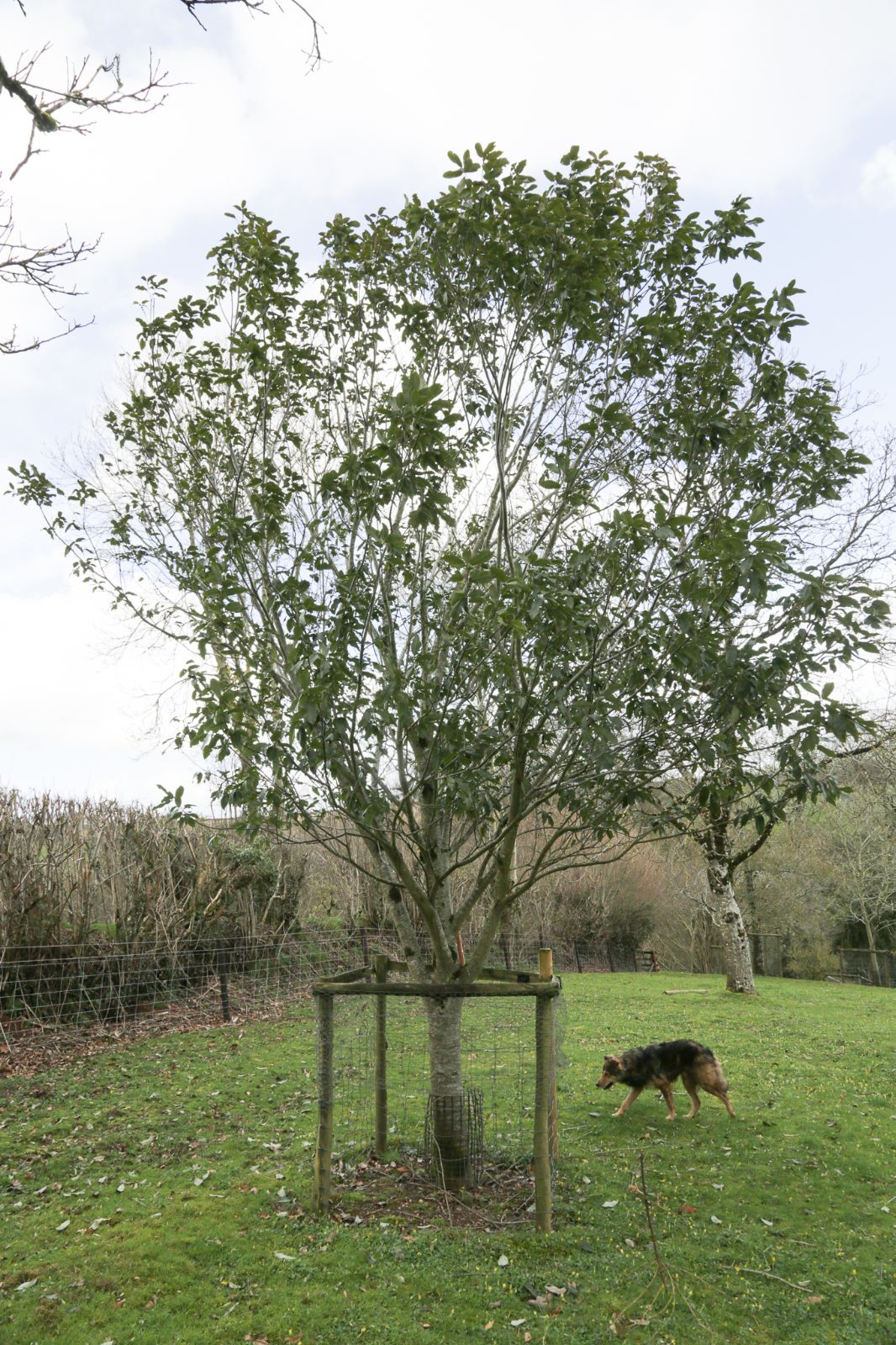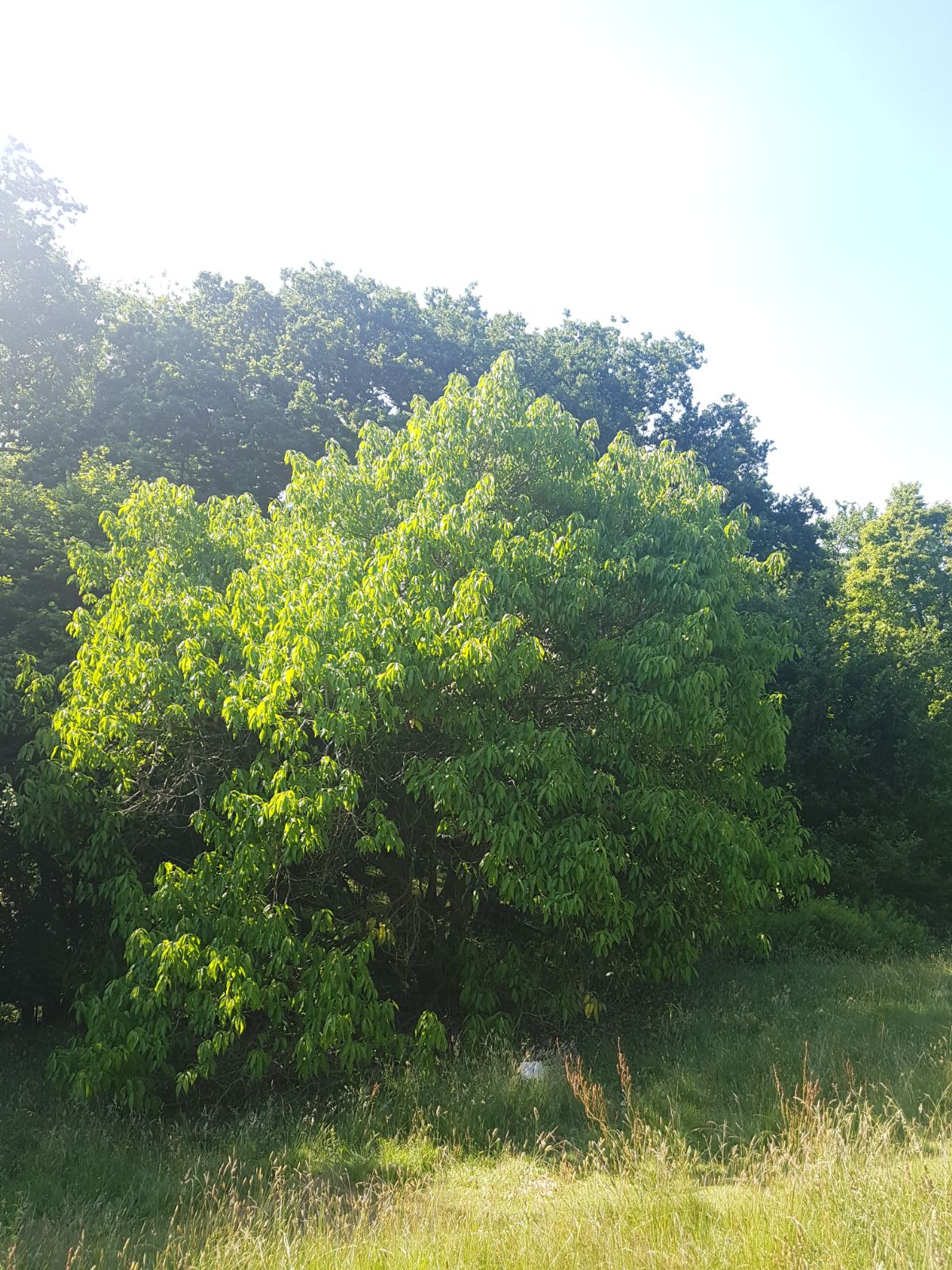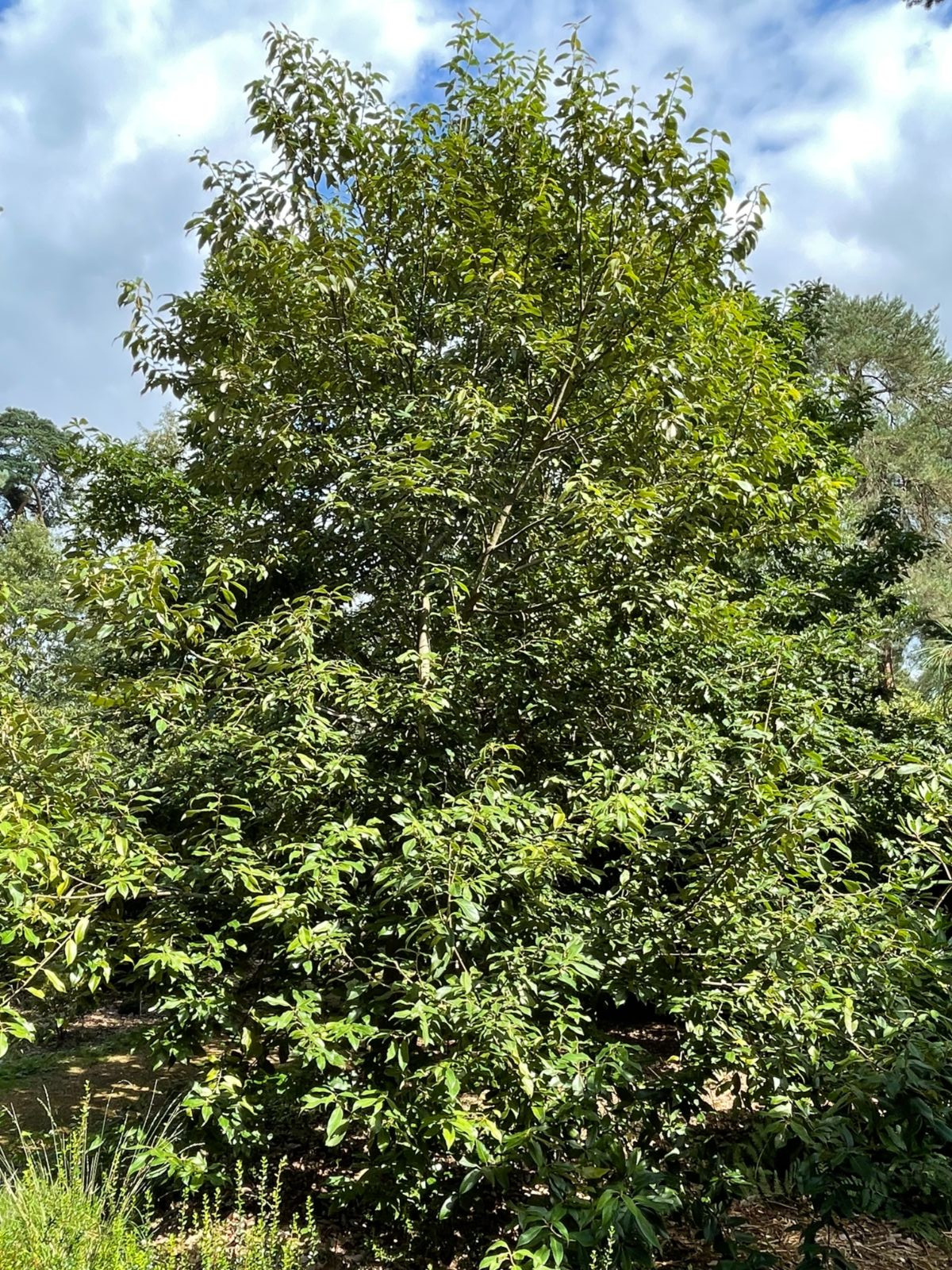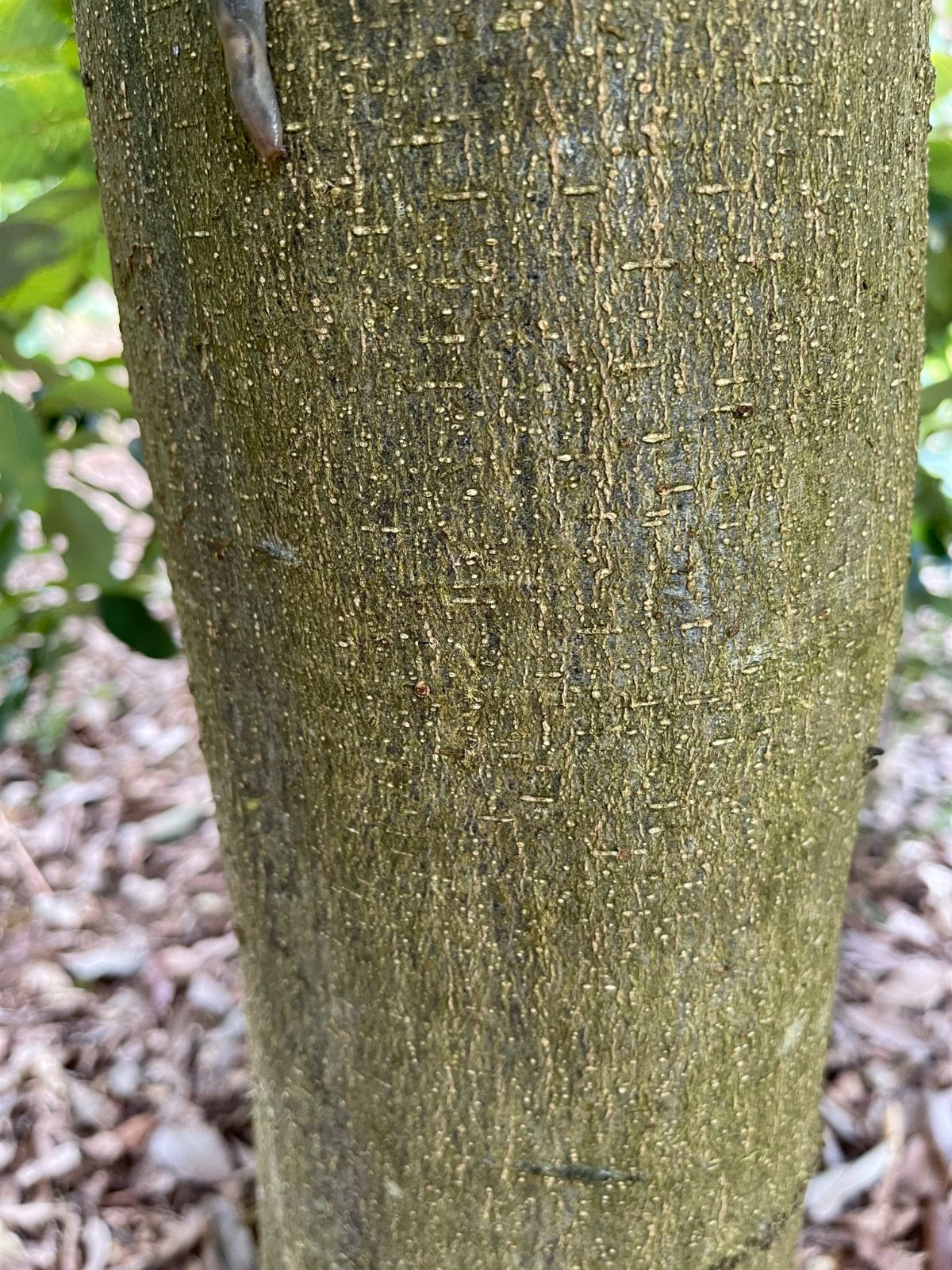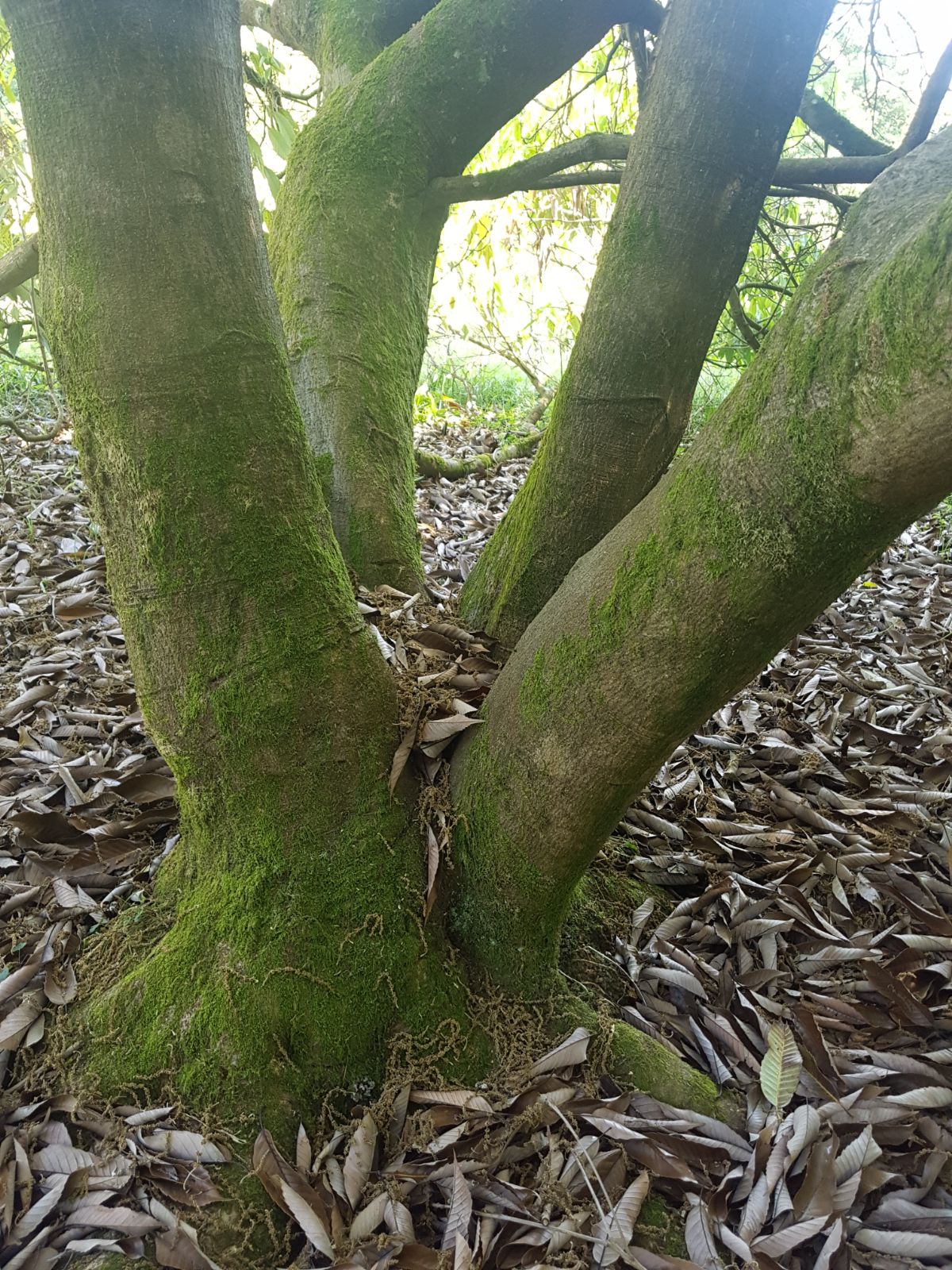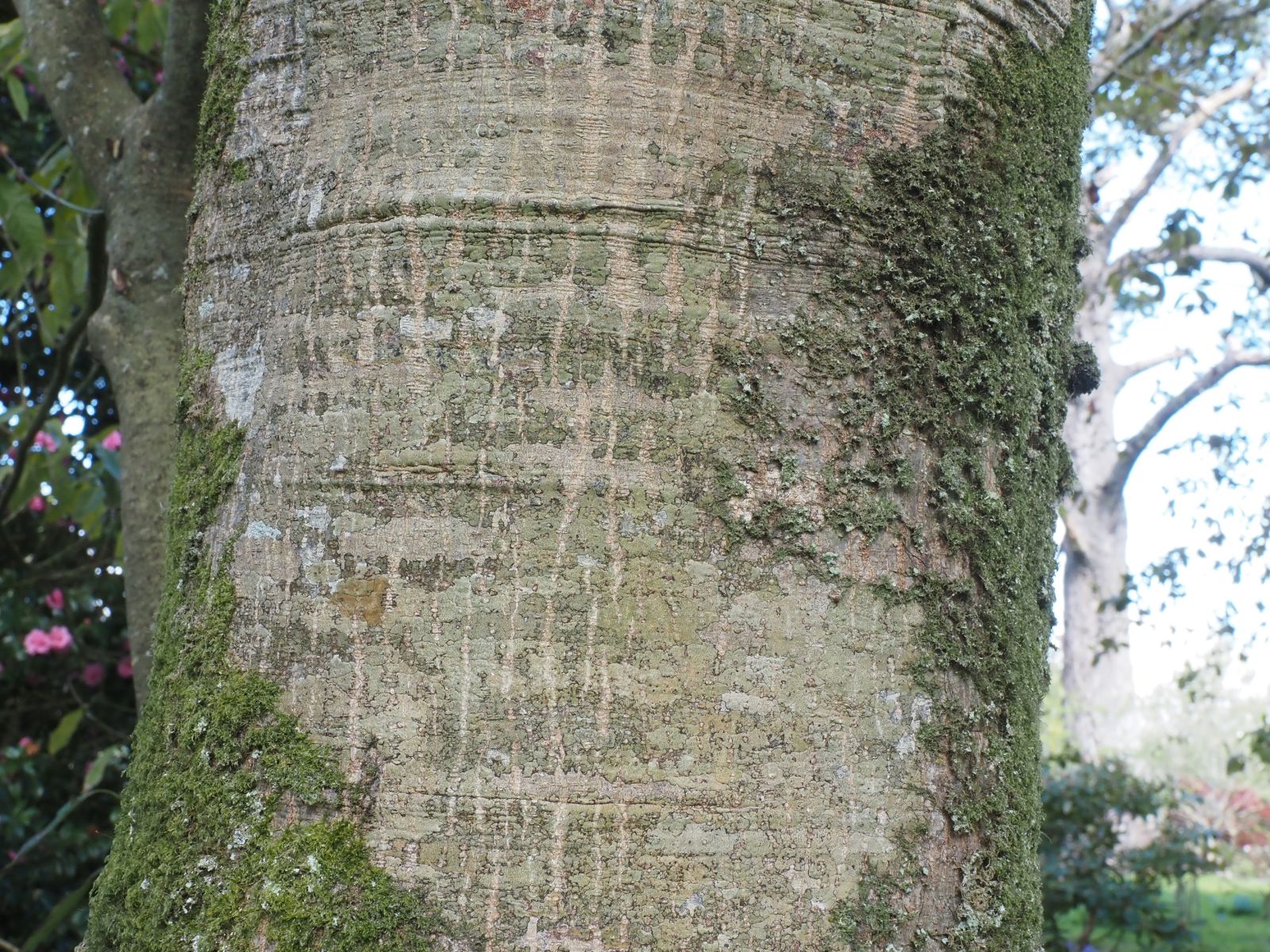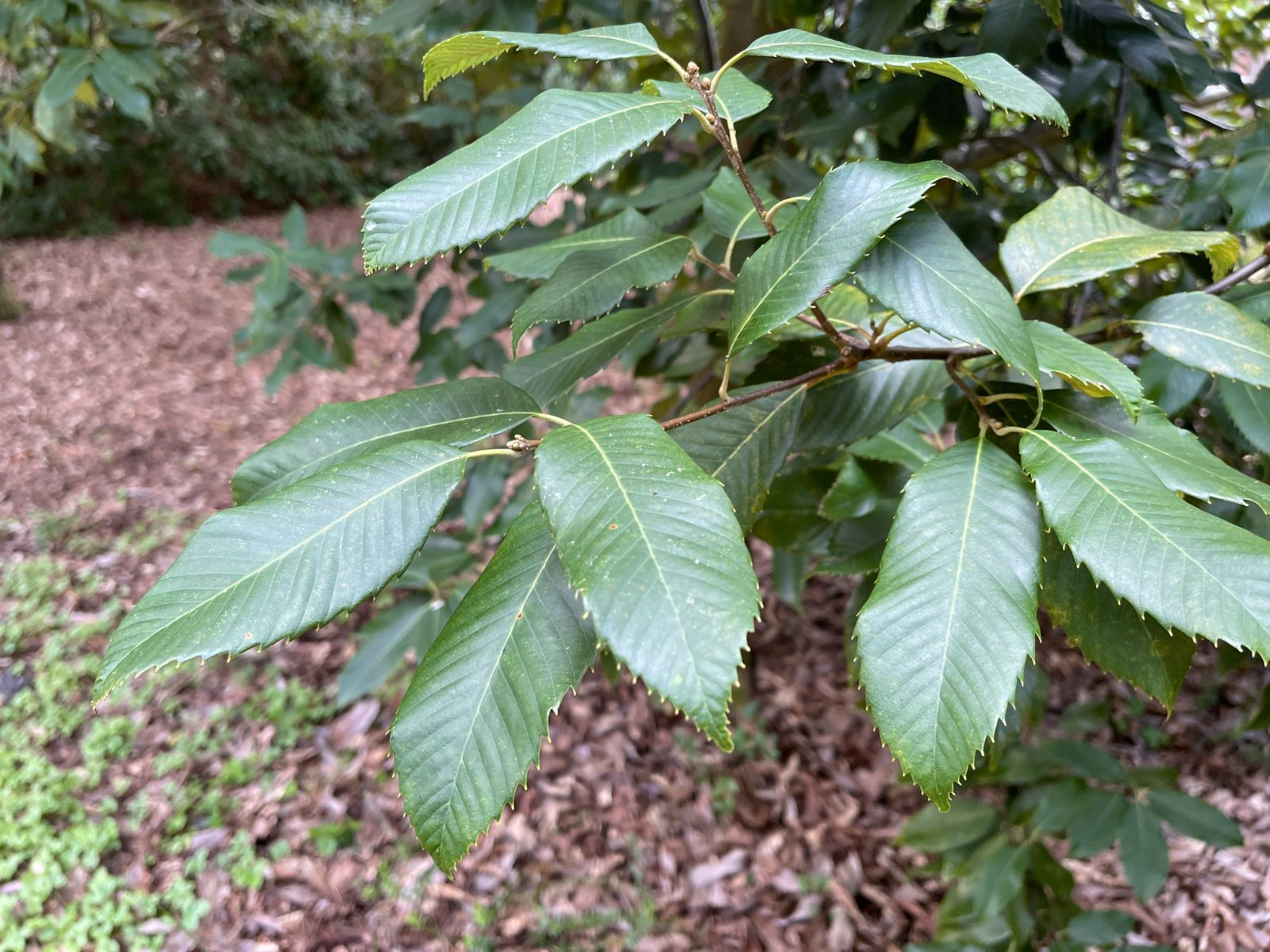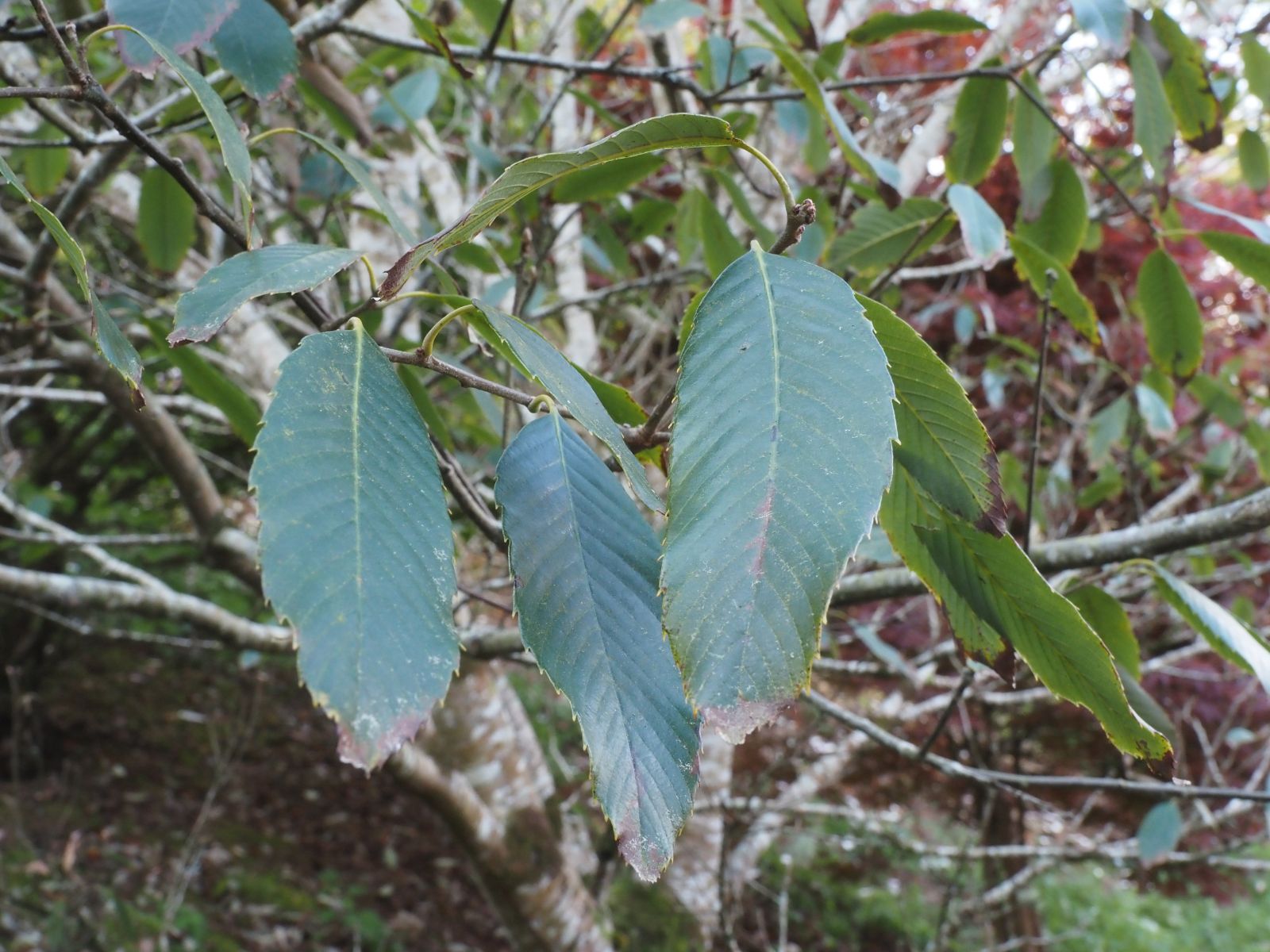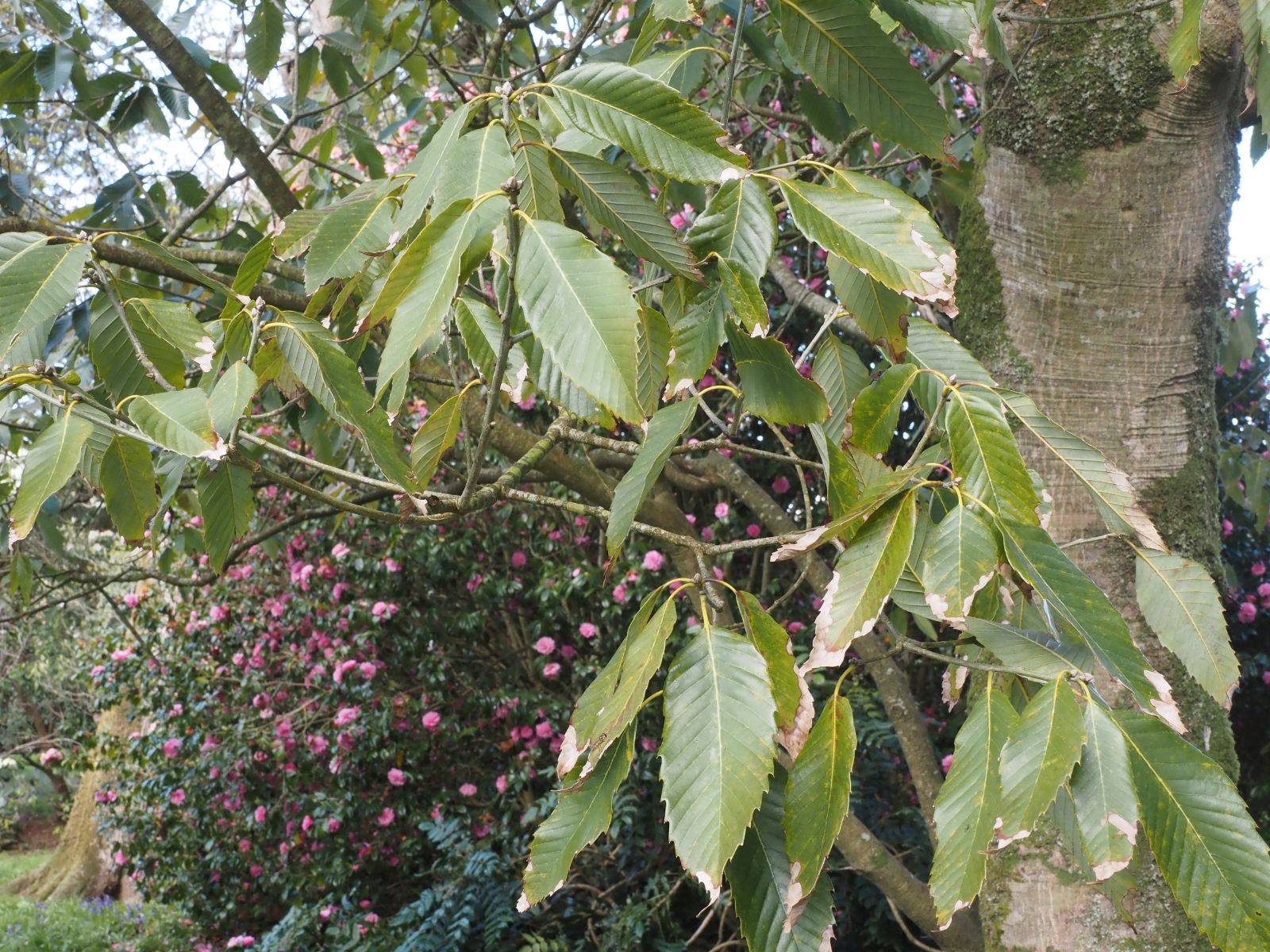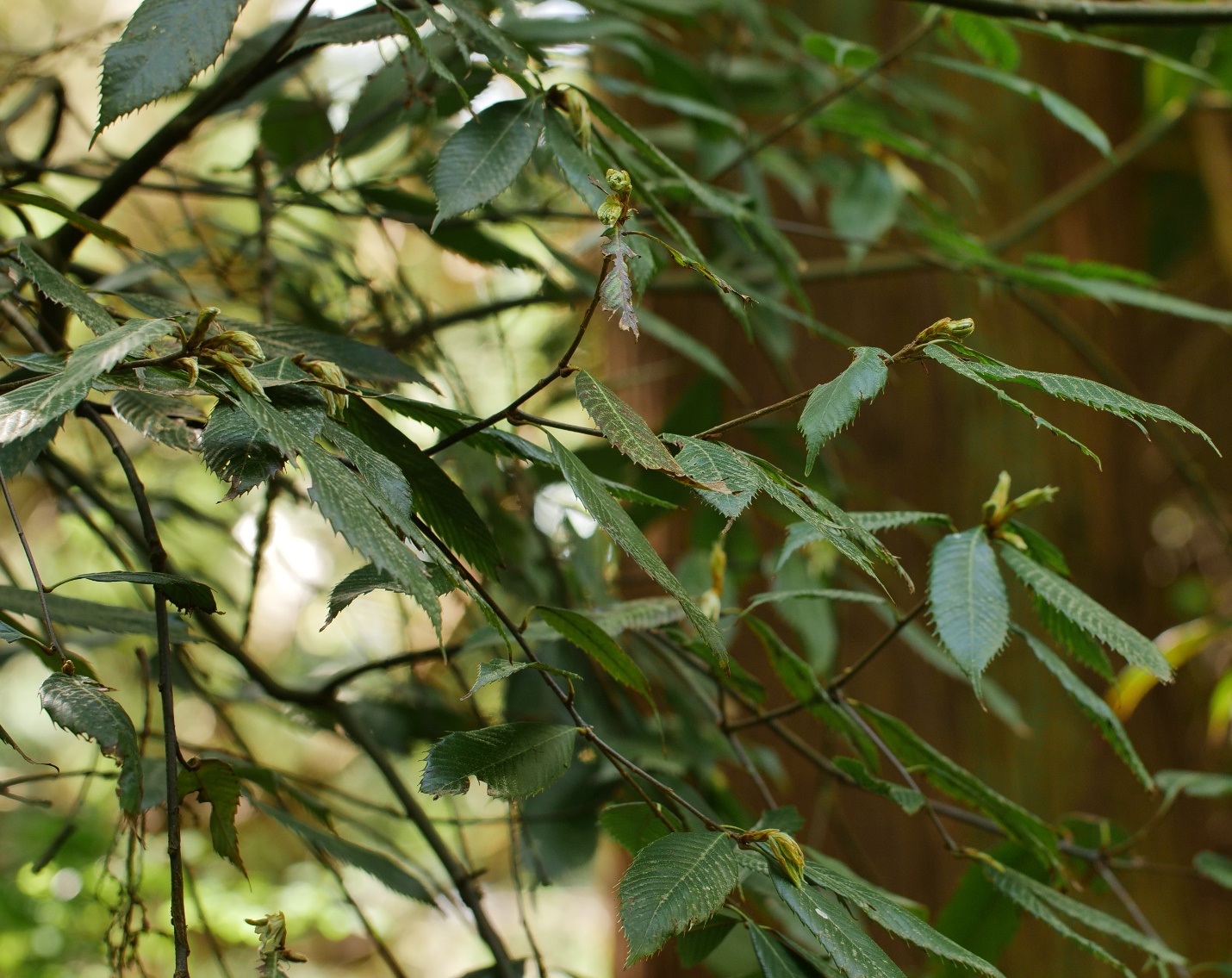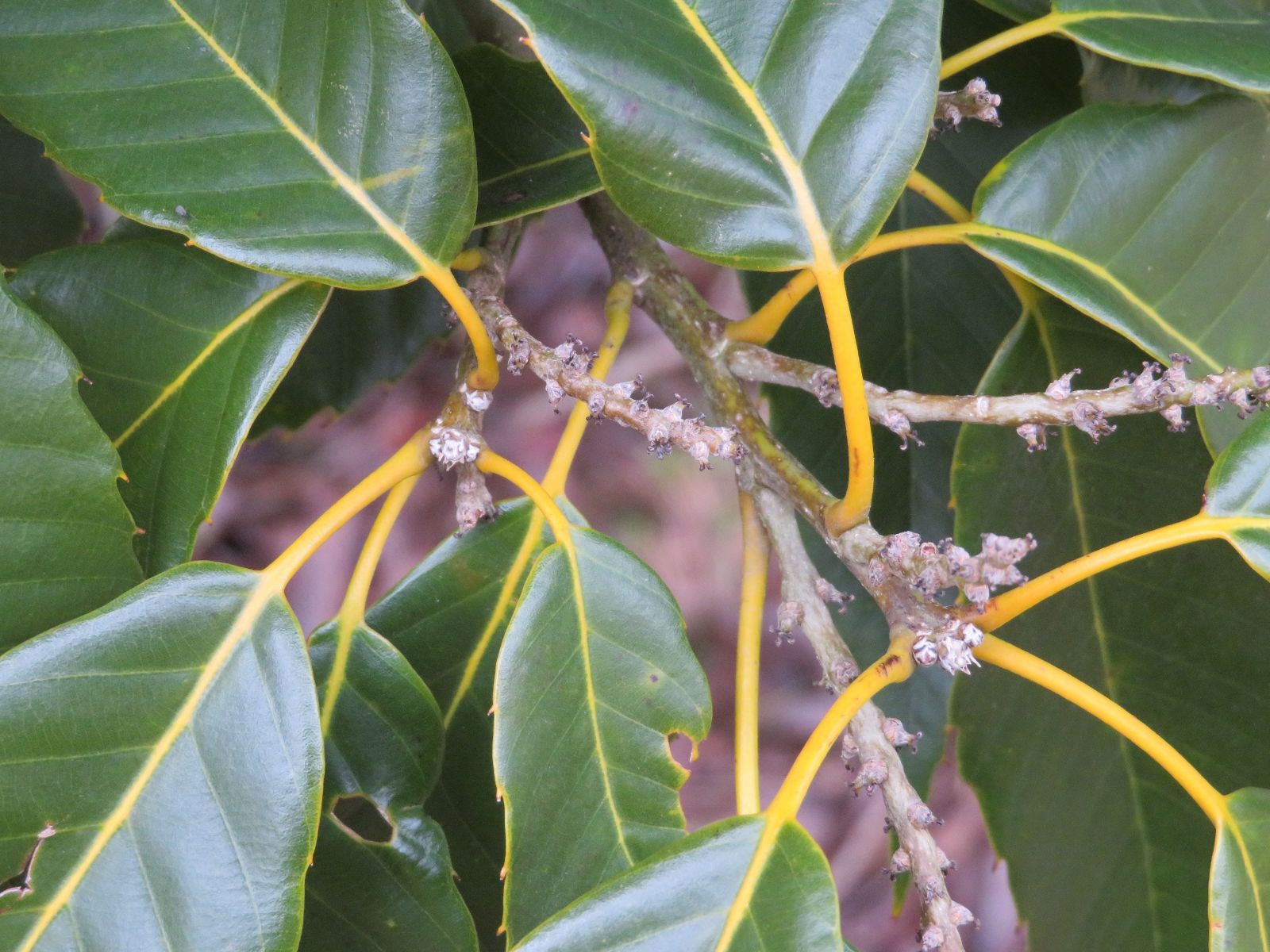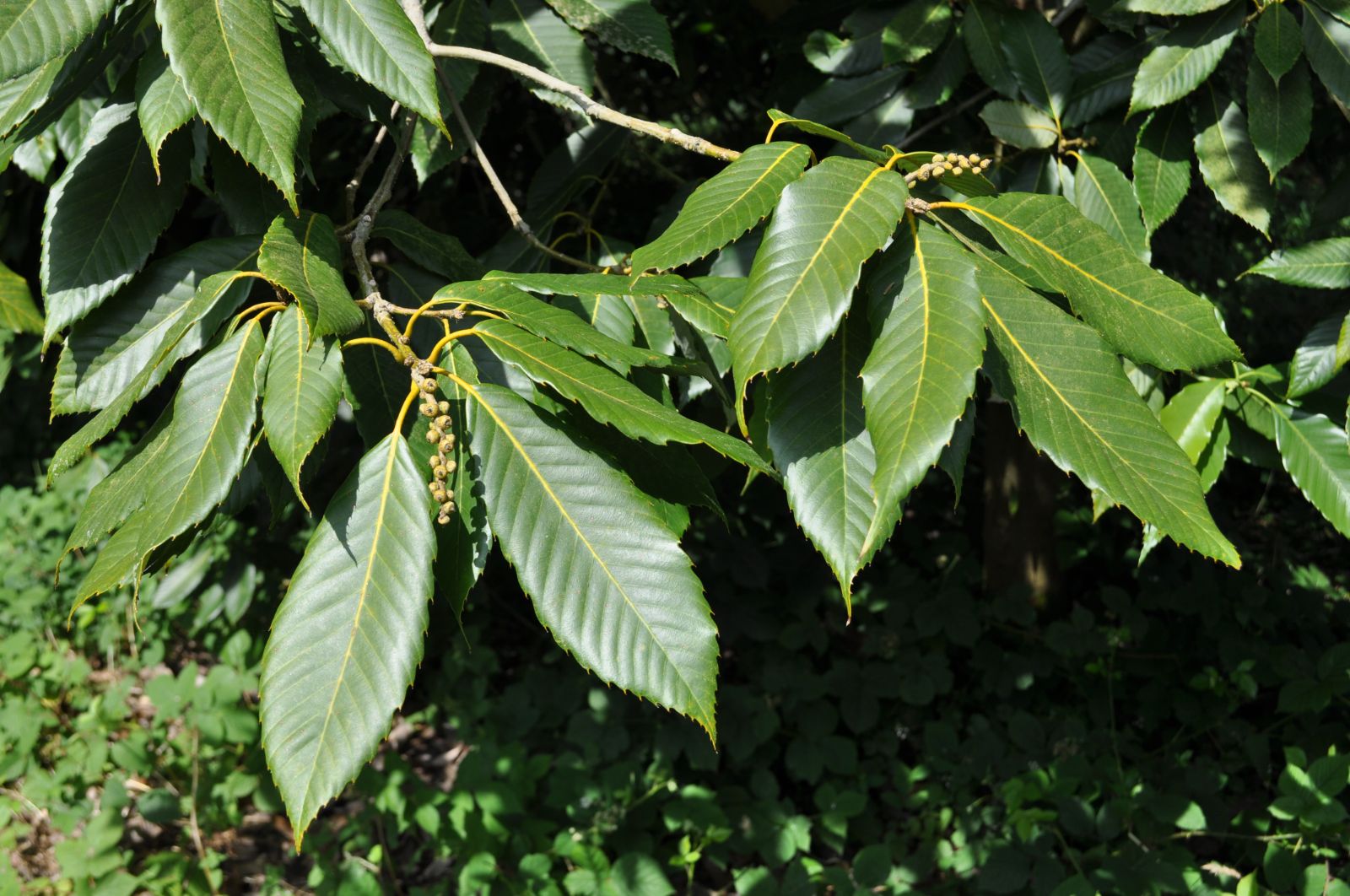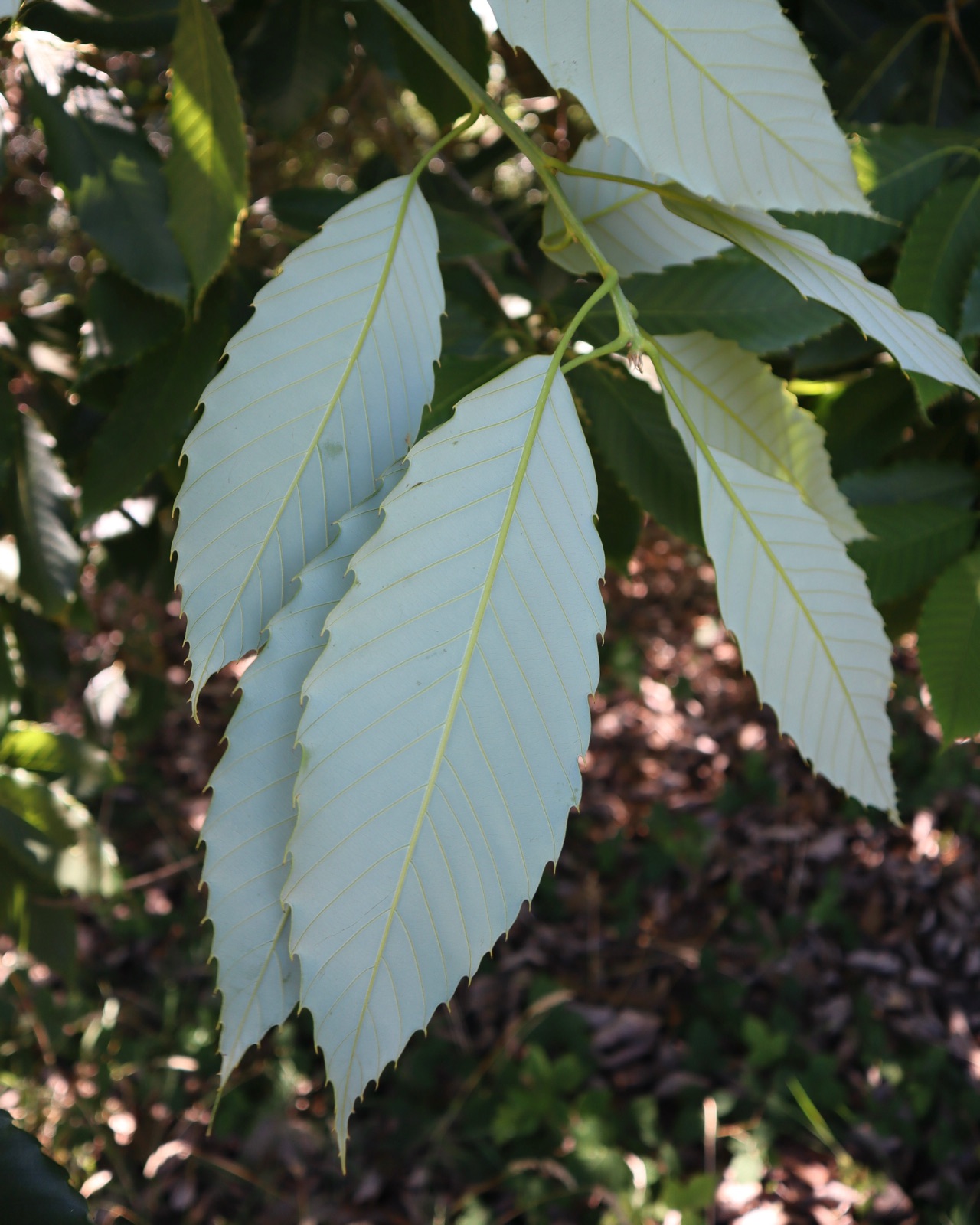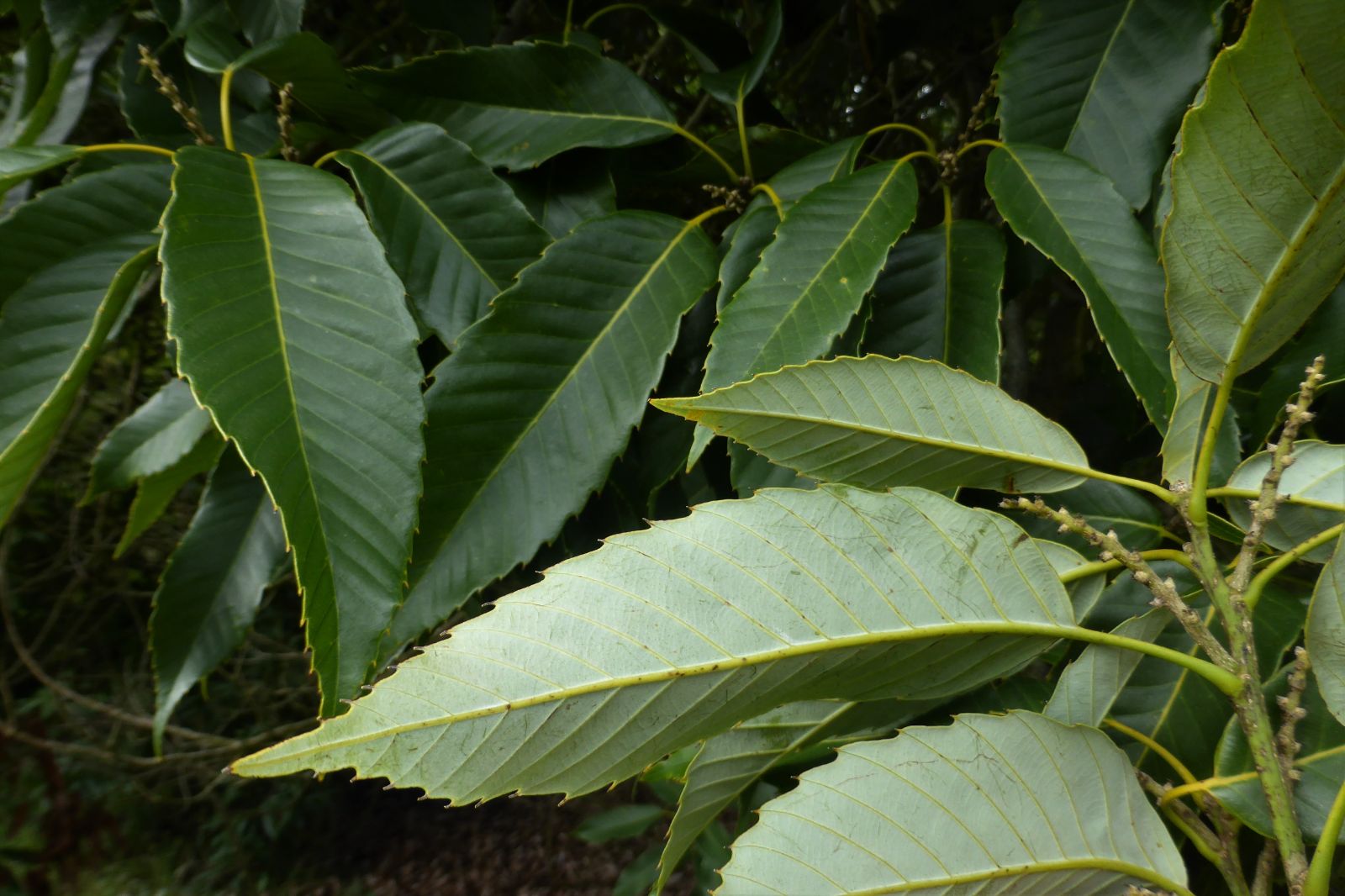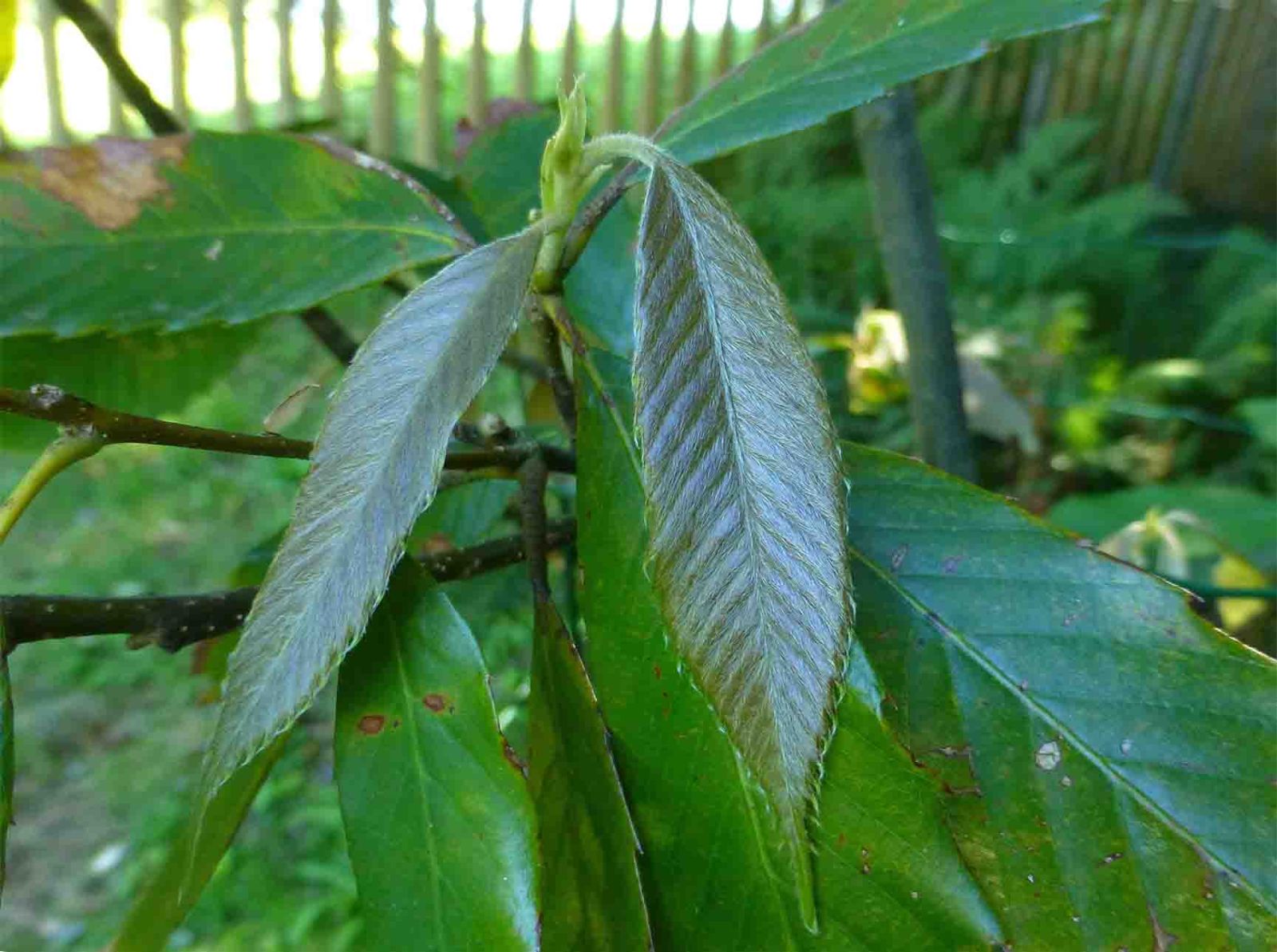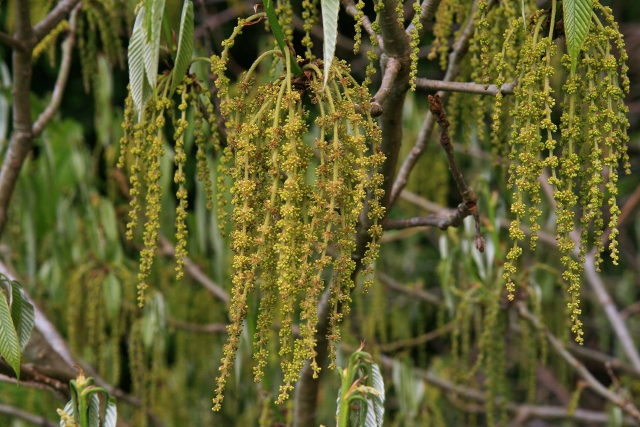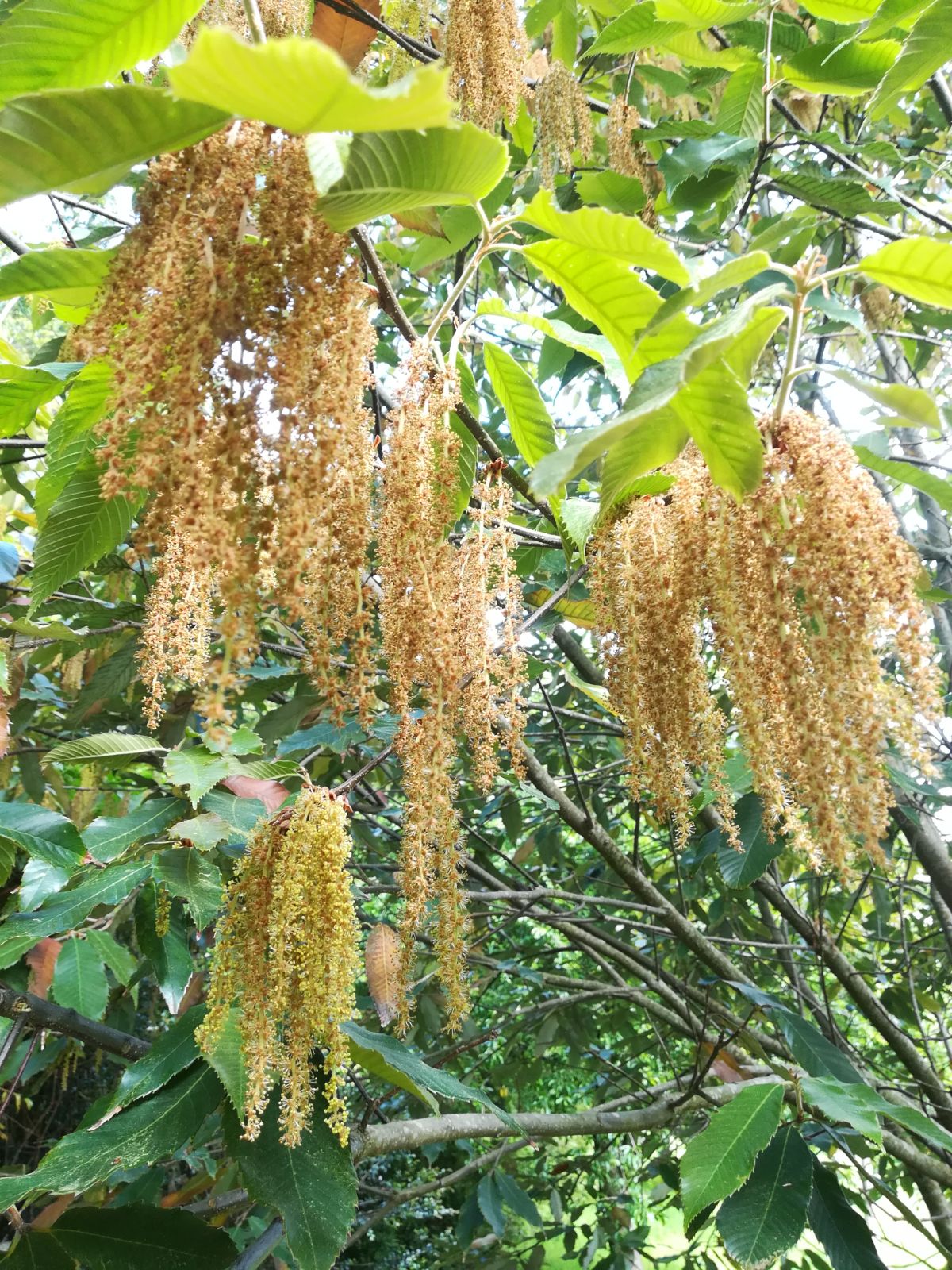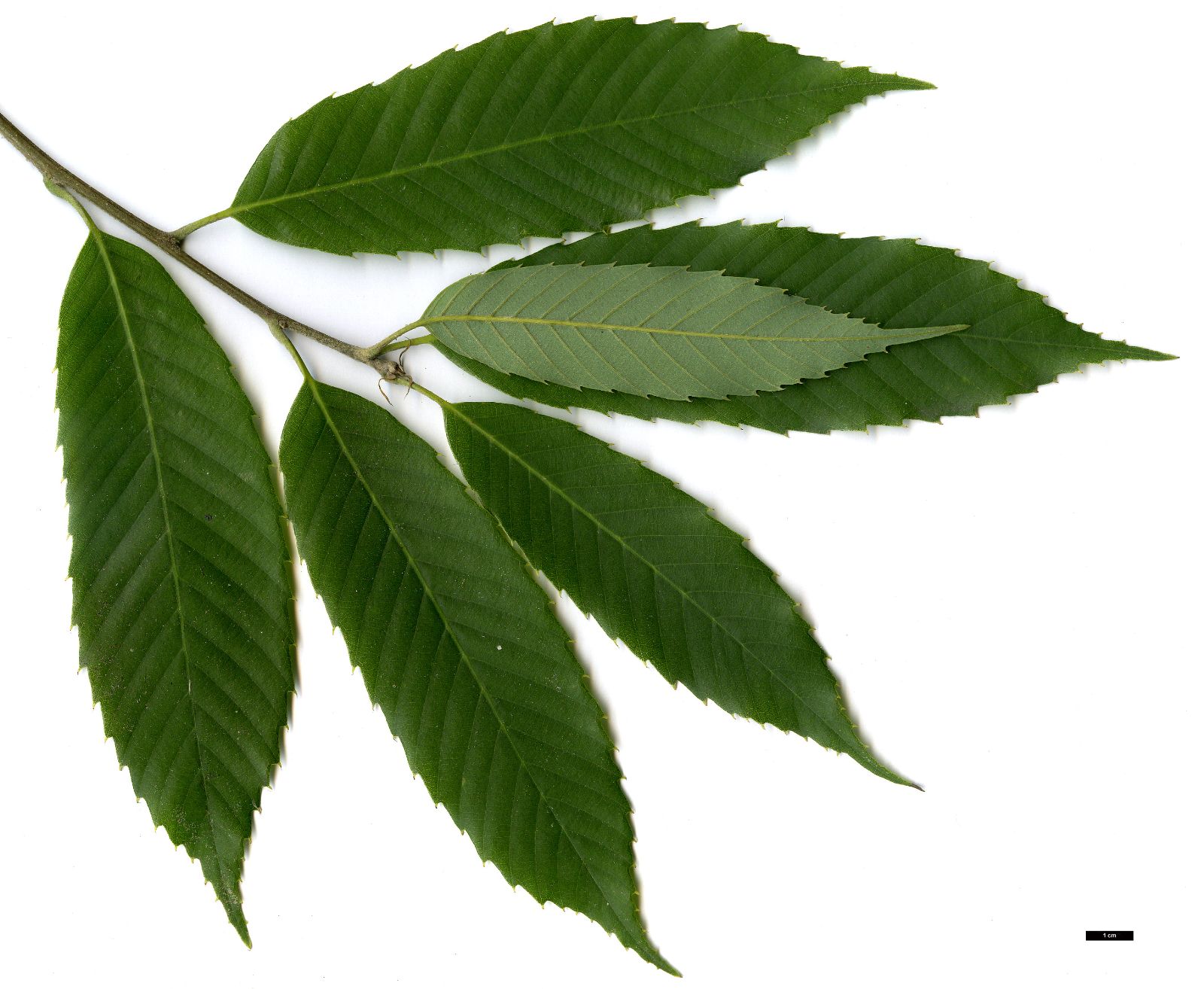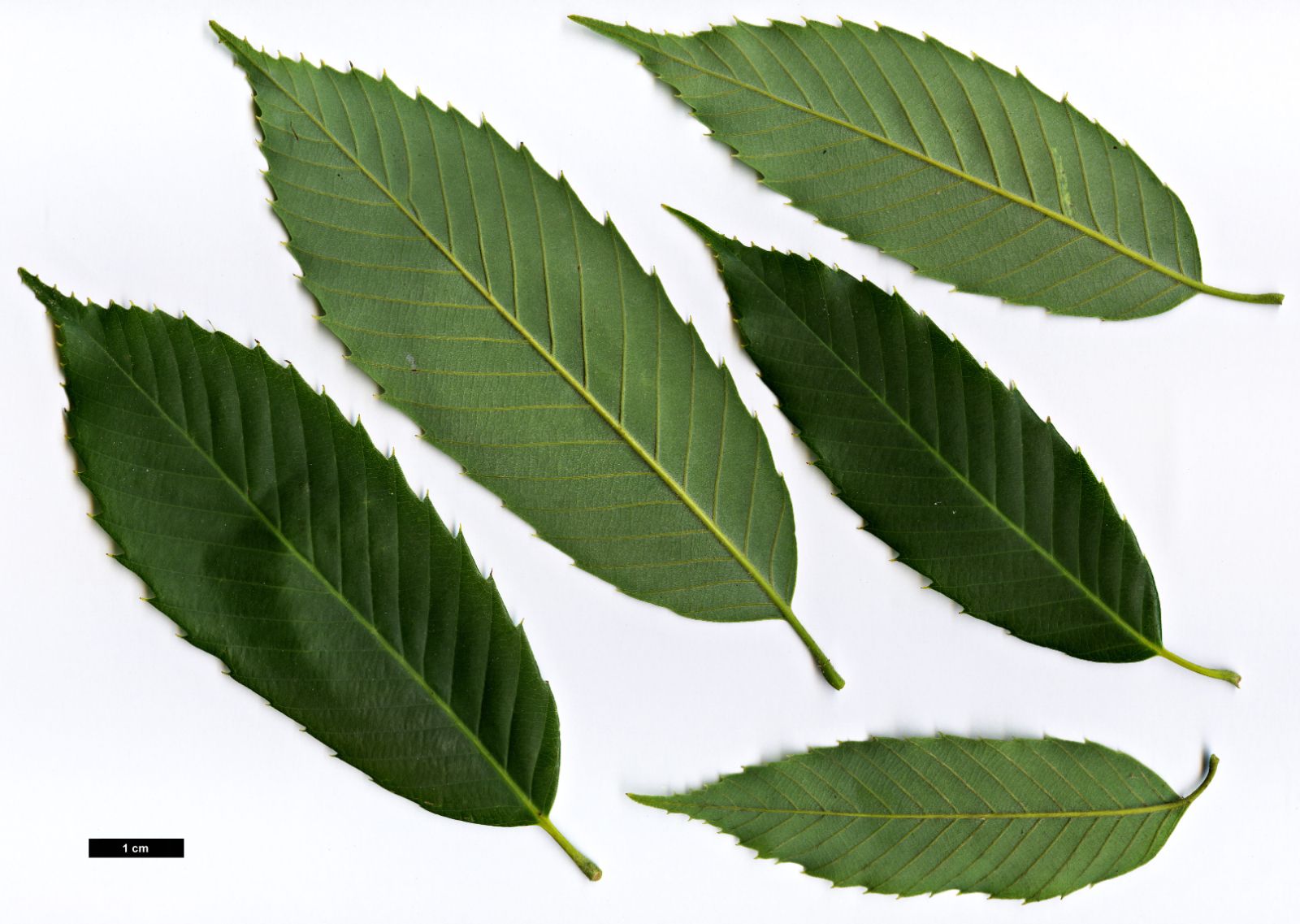Quercus oxyodon
Sponsor
Kindly sponsored by
The Trees and Shrubs Online Oak Consortium
Credits
Allen Coombes & Roderick Cameron (2022)
Recommended citation
Coombes, A. & Cameron, R. (2022), 'Quercus oxyodon' from the website Trees and Shrubs Online (treesandshrubsonline.
Genus
- Quercus
- Subgen. Cerris, Sect. Cyclobalanopsis
Common Names
- 曼青冈 (man qing gang)
- Sồi răng nhọn
Synonyms
- Cyclobalanopsis oxyodon (Miq.) Oerst.
- Cyclobalanopsis lineata var. oxyodon (Miq.) Schottky
- Quercus lineata var. oxyodon (Miq.) Wenz.
- Quercus fargesii Franch.
- Quercus songtavanensis A. Camus
- Quercus glauca var. lineata Franch.
- Quercus salicina var. orgyalis Hand.-Mazz.
Other taxa in genus
- Quercus acerifolia
- Quercus acherdophylla
- Quercus acrodonta
- Quercus acuta
- Quercus acutifolia
- Quercus acutissima
- Quercus afares
- Quercus affinis
- Quercus agrifolia
- Quercus alba
- Quercus aliena
- Quercus alnifolia
- Quercus aquifolioides
- Quercus arizonica
- Quercus arkansana
- Quercus aucheri
- Quercus augustini
- Quercus austrina
- Quercus × auzendei
- Quercus baloot
- Quercus bambusifolia
- Quercus baronii
- Quercus bicolor
- Quercus brantii
- Quercus buckleyi
- Quercus canariensis
- Quercus canbyi
- Quercus candicans
- Quercus castanea
- Quercus castaneifolia
- Quercus cerris
- Quercus chenii
- Quercus chrysolepis
- Quercus coccifera
- Quercus cocciferoides
- Quercus coccinea
- Quercus conspersa
- Quercus crassifolia
- Quercus crassipes
- Quercus delavayi
- Quercus dentata
- Quercus deserticola
- Quercus dolicholepis
- Quercus douglasii
- Quercus dumosa
- Quercus durifolia
- Quercus eduardii
- Quercus ellipsoidalis
- Quercus emoryi
- Quercus engelmannii
- Quercus engleriana
- Quercus euboica
- Quercus eugeniifolia
- Quercus fabri
- Quercus faginea
- Quercus falcata
- Quercus floribunda
- Quercus frainetto
- Quercus franchetii
- Quercus fruticosa
- Quercus fusiformis
- Quercus gambelii
- Quercus garryana
- Quercus geminata
- Quercus georgiana
- Quercus germana
- Quercus gilliana
- Quercus gilva
- Quercus glabrescens
- Quercus glauca
- Quercus graciliformis
- Quercus gravesii
- Quercus griffithii
- Quercus grisea
- Quercus guyavifolia
- Quercus hartwissiana
- Quercus hemisphaerica
- Quercus × hispanica
- Quercus hondae
- Quercus hypargyrea
- Quercus hypoleucoides
- Quercus ilex
- Quercus ilicifolia
- Quercus imbricaria
- Quercus incana
- Quercus infectoria
- Quercus insignis
- Quercus ithaburensis
- Quercus kelloggii
- Quercus × kewensis
- Quercus kiukiangensis
- Quercus laceyi
- Quercus laevis
- Quercus lamellosa
- Quercus lanata
- Quercus lancifolia
- Quercus laurifolia
- Quercus laurina
- Quercus × leana
- Quercus leucotrichophora
- Quercus × libanerris
- Quercus libani
- Quercus lobata
- Quercus lobbii
- Quercus lodicosa
- Quercus longinux
- Quercus longispica
- Quercus look
- Quercus × ludoviciana
- Quercus macranthera
- Quercus macrocalyx
- Quercus macrocarpa
- Quercus macrolepis
- Quercus marilandica
- Quercus mexicana
- Quercus michauxii
- Quercus mongolica
- Quercus monimotricha
- Quercus montana
- Quercus morii
- Quercus muehlenbergii
- Quercus myrsinifolia
- Quercus myrtifolia
- Quercus nigra
- Quercus × numidica
- Quercus oblongifolia
- Quercus obtusata
- Quercus oglethorpensis
- Quercus pagoda
- Quercus palmeri
- Quercus palustris
- Quercus pannosa
- Quercus parvula
- Quercus petraea
- Quercus phellos
- Quercus phillyreoides
- Quercus planipocula
- Quercus poilanei
- Quercus polymorpha
- Quercus pontica
- Quercus prinoides
- Quercus pubescens
- Quercus pyrenaica
- Quercus rehderiana
- Quercus reticulata
- Quercus robur
- Quercus rotundifolia
- Quercus rubra
- Quercus rugosa
- Quercus rysophylla
- Quercus sadleriana
- Quercus salicina
- Quercus sartorii
- Quercus × schneideri
- Quercus schottkyana
- Quercus semecarpifolia
- Quercus senescens
- Quercus serrata
- Quercus sessilifolia
- Quercus setulosa
- Quercus shumardii
- Quercus sinuata
- Quercus spinosa
- Quercus stellata
- Quercus stenophylloides
- Quercus suber
- Quercus subspathulata
- Quercus tarokoensis
- Quercus tatakaensis
- Quercus texana
- Quercus tomentella
- Quercus trojana
- Quercus tungmaiensis
- Quercus turbinella
- Quercus × turneri
- Quercus undulata
- Quercus utahensis
- Quercus utilis
- Quercus uxoris
- Quercus variabilis
- Quercus velutina
- Quercus virginiana
- Quercus vulcanica
- Quercus warburgii
- Quercus wislizenii
- Quercus xalapensis
Low-growing tree 10–25 m tall, 1.2–2 m dbh, with wide-spreading branches forming a flattened crown. Bark grey to greyish-brown, smooth and glossy later dull and very finely fissured. Young shoots tomentose, soon becoming glabrous, with sparse greyish lenticels. Buds ovoid, rounded and obtuse, scales pale grey with yellowish pubescence, sometimes waxy, in 5 rows, linear stipules oblong, 1–1.2 cm, persistent till the following spring. Leaves leathery, oval, elliptic or oblong-lanceolate, rounded to asymmetrically wedge shaped, 12–22 cm × 3–8 cm, apex asymmetrically acuminate and cuspidate or obtuse, margin serrate almost from the base, teeth acuminate, mucronate, straight or slightly spreading; leaves emerge covered in silky pubescence on both sides, upper surface soon becoming glabrous, generally dull green, less frequently glossy dark green, underside becoming whitish or glaucous, farinose to waxy; midvein prominent underneath, as are the 11–25 secondary veins that extend to the margin, network of tertiary veins clearly visible below; petiole glabrous, often reddish, 1.5–4 cm. Cupules cup shaped, 0.7–1 cm tall × 1.2–2 cm wide, enclosing up to ½ the nut, consisting of 5 to 8 rings covered with fine greyish tomentum, sometimes waxy, interior silky white. Acorns ovoid to almost spherical, glabrous, brown, 0.8–2.5 cm long × 0.7–2.3 cm wide, stylopodium with 3 or 4 circles, about 4 mm wide; acorns solitary or more often in pairs on a spike 2–5 cm long, ripening the first year. (Huang et al. 1999; le Hardÿ de Beaulieu & Lamant 2010).
Distribution Bangladesh Bhutan Myanmar China Guangdong, Guangxi, Guizhou, Hubei, Hunan, Jianxi, Shaanxi, Sichuan, SE Xizang, Yunnan, Zhejiang India Assam, Mehhalya, Arunachal Pradesh, Nagaland Laos Nepal Thailand Vietnam
Habitat Mixed mesophytic forests on mountain slopes and in valleys; 700–2900 m, in association with Tsuga dumosa and Q. lamellosa (Nepal), Q. engleriana, Q. stewardiana, Fagus engleriana, and Acer sinense (China).
USDA Hardiness Zone 8
RHS Hardiness Rating H4
Conservation status Least concern (LC)
Taxonomic note According to some authors (e.g. Oak Names Database 2022), this species is not found in Bangladesh.
This evergreen oak is distributed across a vast area, from Nepal through central China, extending into southeast Asia as far as northern Vietnam. It displays considerable variation and it has been known by other names now considered synonyms (e.g. Q. fargesii in Sichuan, and Q. songtavanensis in Vietnam). It is also variable in the opinions it elicits from oak enthusiasts: while it fails to impress Charles Williams, for whom ‘Dull and rare really do meet in this historic plant’ (Williams 2014), for Béatrice Chassé, this species is ‘a much sought-after rarity for oak lovers’ (Chassé 2017).
Quercus oxyodon It was introduced to the UK in 1900 by Ernest Wilson from west Hubei, and a plant from this collection grows at Caerhays, Cornwall, England, received from Kew in 1919. It had reached 8.2 m in 1966 and did not progress much further in subsequent years: in 2016 it measured 10 m × 36 cm, still sufficient to secure its title as champion for the UK and Ireland (Williams 2014). According to Charles Williams, it has never set seed, despite flowering profusely most years, probably due to the mild wet climate at Caerhays. A specimen at Nymans in West Sussex, however, fruited abundantly in 2013, and the seed seems to breed true (Chassé 2017). At Sir Harold Hillier Gardens, England, plants from three accessions have grown steadily. A plant from Guizhou, China (GUIZ 87) planted in 1997 had reached 8 m in 2009, 10.5 m in 2015 and 12.8 m × 29.9 cm dbh in 2021; two plants from seed collected in Yunnan (CMBS 472) had reached 3.8 m × 10.3 cm dbh and 7.2 m × 15.1 cm dbh in 2021; another from seed collected by Keith Rushforth (KR 4000) was 1.95 m tall in 2008 and had reached 6 m × 8.4 cm dbh in 2021 (The Oaks of Chevithorne Barton 2011; Royal Botanic Garden Edinburgh 2021; B. Clarke pers. comm. 2021). At Chevithorne Barton, another plant from CMBS 472, planted in 2003, was 5.5 m tall in 2011 and had reached 7 m in 2021 (J. MacEwen pers. comm. 2021); its leaves persist though winter there and according to Michael Heathcoat Amory (2009) it is one of the best Chinese oaks grown at Chevithorne Barton. At Tregrehan, the best of several introductions from west Yunnan, China, was sourced from the Mekong-Salween Divide and planted in 1996, reaching about 10 m in 2020 (T. Hudson pers. comm.). The species was also collected in Sichuan in 1999 by Kirkham, Cole, Flanagan, and McNamara (SICH 2010): there are two plants from this collection at Kew and three at Howick Hall Arboretum (2021), where it has reached 7 m tall with a spread of 5 m and two stems both 10 cm in diameter (R. Jamieson pers. comm. 2021). At High Beeches, West Sussex, a multistemmed tree planted in 1970 had a diameter of 33 cm at 1 m and was 7.2 m tall in 2018 (The Tree Register 2022); it sheds its leaves in spring and then flowers before producing new foliage in the summer (High Beeches Gardens 2014). At Buckingham Palace Garden, a tree planted in 2002 was 6 m tall in 2020 (M. Lane pers. comm.).
In Europe, trees from Jean Merret’s 2004 collection in Myanmar are doing well at Iturraran Botanical Garden, Spain, and Arboretum Chocha, France, reaching around 6 m (pers. obs.). At Arboretum des Pouyouleix in the Dordogne, France, a plant from the same collection planted in 2006 fails to put on new growth in most years and only reached 1 m by 2020 (B. Chassé pers. comm.), while another at Henri de Brem’s collection in Le Hanouard, Normandy, France, from a Jean Merret collection in Myanmar in 2005, has also grown poorly and by 2011 had been cut back several times (Chassé 2012).
In North America, a specimen from the KR 4000 collection, accessioned in 1997, grows in the David C. Lam Asian Garden at UBC Botanical Garden; it was around 6 m tall in 2021 (University of British Columbia 2022, D. Justice pers comm.). Another tree from the same source is to be found at Hackfalls Arboretum in New Zealand, where it reached 4 m in 2016, and 36 cm dbh in 2020 (Hackfalls Arboretum 2022). Nearby Eastwoodhill Arboretum has four Q. oxyodon that were planted in 1996 (Eastwoodhill Arboretum 2022).
The species was described in 1863 by Dutch botanist Friedrich Miquel from a Hooker & Thomson specimen collected in the Khasi Hills, Eastern Himalayas, India, at an elevation of 1500 m. The common name in Chinese can be translated as ‘graceful evergreen oak’. In Vietnamese, the vernacular name means ‘sharp-toothed oak’. The epithet refers to the serrate leaf margins and derives from the Ancient Greek ὀξύς (oxús) = ‘sharp’ + ὀδών (odṓn) = ‘tooth’.

